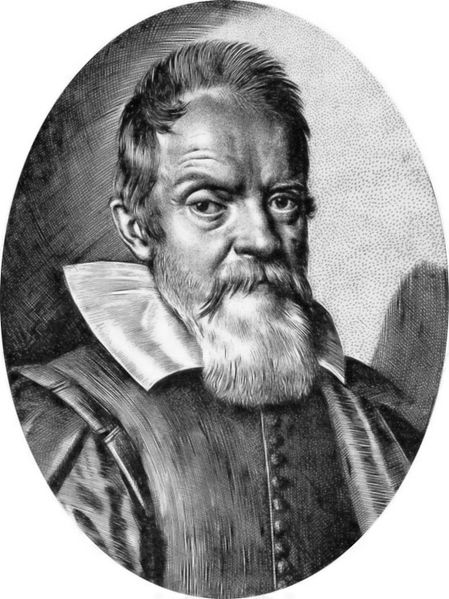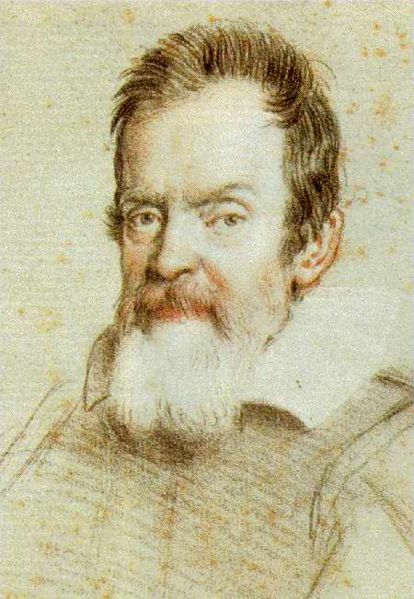Why Galileo lost his sight
Interview with
Diana - Now, we've looked back at medicine through history, but we can also use modern medicine to try to diagnose historical people's illnesses. This is exactly what happened when Peter Watson, an ophthalmologist, noticed that portraits of Galileo showed him with one eye pushed outwards and downwards. We know that Galileo suffered from a series of unknown eye complaints, and eventually lost his sight, but modern evidence may shed light on what these conditions were. Here's Peter Watson...
Peter - I was writing a book on scleral disease and I read a paper which suggested that Galileo might have had scleritis. I looked at the paper. I wasn't totally convinced but I realised there was a portrait of Galileo in the Fitzwilliam museum and the archivist showed me the picture. When I looked at it, it was quite clear that he didn't have scleral inflamation but he did have a very unusual condition which is known as mucocele of the frontal sinus. This is a condition which is caused by a congenital anomaly of the frontal sinus. You don't actually drain the muscus form the frontal sinus and it accumulates. This pushes the eyeball downwards and outwards. In the portrait he has had to lift his eyebrow up to keep his eye open. This eye is quite obviously displaced from the other one.
 Diana - Looking at the portrait it looks like he's raising his eyebrow as us, quite suggestively. How do we know it's an accurate portrait?
Diana - Looking at the portrait it looks like he's raising his eyebrow as us, quite suggestively. How do we know it's an accurate portrait?
Peter - the portrait was done in 1624 by a person called Leoni. He and his father gave a lot of portraits which are 'alla machia', which means 'as it is' or 'to show the personality.' they were well-known for doing just exactly that. This was almost certainly correct. The original sketches are also extant - one in the Louvre which show exactly the same situation as we have here. What needed to be done next was to find out whether this anomaly was present before these portraits were taken which was when he was 64. indeed, the portraits prior to that do show that particular anomaly.
Diana - Could this picture be indicative of any eye conditions other than a mucocele or a cyst in the frontal sinus?
Peter - You accept it, it's totally characteristic. There really isn't another condition that looks like it! If you do look at a portrait of him when he was 34 it does show him with an anomaly of the upper part of his right eyelid and the eyebrow. I think it was part of a congenital anomaly.
Diana - And as we look through the portraits through the years you can actually see it getting worse until that one when he was 64. Some people have argued that perhaps he spent far too much time looking through a telescope at the sun. Why do you think this wasn't the case?
Peter - If he'd had solar retinopathy he would have been centrally blind. The sun's rays would burn the macular so he wouldn't have been able to see centrally. This clearly was not the case. When he looked at the sun he used a reflective technique for doing so. He was the first person to describe sunspots. These were all done by shadow drawings which were extraordinarily accurate.
Diana - How could a mucocele affect Galileo's sight?
Peter - Well, none of the conditions we've talked about at the moment have any reltionship to blindness and he went totally blind. The story's quite interesting in that he was brought up mostly by his father. He was sent to a monastery called Vallombrosa. While he was there he developed an extremely severe opthalmia for which he was actually removed from the monastery. He then recovered form that and was perfectly alright until his mid-thirties. He then had a lunch with a friend of his when he was working in Padua. The three of them went down into a cool room in the middle of the Summer to have a siesta. This room was cooled by a waterfall. When they all woke up they were all extremely ill. One man died more or less straight away, Another one died three weeks later, totally deaf. Galileo was deaf in one ear for a little while but actually recovered. Thereafter he complained of extreme pain in his joints, bloody discharge and generally unwell. He used to have bouts of this which were so severe that he was stuck in bed for a very long time. In fact on one occasion when there were three comets to look at he couldn't even get out of bed to look at them. They had to be described to him so he must have been extremely ill. Well, all of this is enough to set up, if you have an inflammation in the eye as a result of immunological disease, then this would certainly do it. One of these is ulcerative colitis or Reiter's disease or Crohn's disease: all of which have specific HLA types.
Diana - So it may have been that, in addition to the swelling above his eye his own immune system was eventually responsible for his blindness. Are there any more clues?
 Peter - Well, he then described a condition where he saw halos round the light. This is really as an aside in a book on optics. He described this halo when he looked at a candle and it expanded and contracted according to the condition of his eye. He recognises that this was indeed due to the swelling of the front of his eye - his cornea. This, of course, is a glaucomatous halo. But if you look carefully at the history thereafter you find that right to the very end of his life - even when one eye was extremely bad he was still able to observe through the telescope. In fact he described the thing called the libations of the moon where the moon moves slightly one way then another within the last few months of his sight. Clearly he could see accurately right down the middle of his vision, even though he had no peripheral vision. This is much more like an angle closure glaucoma. We now have a problem. We have a possibility of him having a uveitic glaucoma or a primary glaucoma, that's to say just simply due to a disease of his eye. The only way to find this out is to find out whether he has a specific HLA type which could have been part of his sero-negative disease.
Peter - Well, he then described a condition where he saw halos round the light. This is really as an aside in a book on optics. He described this halo when he looked at a candle and it expanded and contracted according to the condition of his eye. He recognises that this was indeed due to the swelling of the front of his eye - his cornea. This, of course, is a glaucomatous halo. But if you look carefully at the history thereafter you find that right to the very end of his life - even when one eye was extremely bad he was still able to observe through the telescope. In fact he described the thing called the libations of the moon where the moon moves slightly one way then another within the last few months of his sight. Clearly he could see accurately right down the middle of his vision, even though he had no peripheral vision. This is much more like an angle closure glaucoma. We now have a problem. We have a possibility of him having a uveitic glaucoma or a primary glaucoma, that's to say just simply due to a disease of his eye. The only way to find this out is to find out whether he has a specific HLA type which could have been part of his sero-negative disease.
Diana - The glaucoma could have resulted from an auto-immune, inflammatory disease or it could have come from an infection. The HLA - human leukocyte antigen region - is a stack of genes that code for immune responses. If you can find that you'll know why Galileo lost his sight!
Peter - That's what we'd like to do. I'm not quite sure of the situation at the present time. As I understand it, the Vatican has given permission for his body to be re-examined in the tomb in Santa Croce. Galileo himself has lost two pieces of bone already, one of which is in the museum in Florence and the other one in the museum in Padua. Neither of these show any arthritic changes which might be due to inflammatory disease. So it's yet another feature which makes me feel that it is an angle-closure glaucoma and not a secondary glaucoma. DNA taken from the body will enable us to find out.









Comments
Add a comment